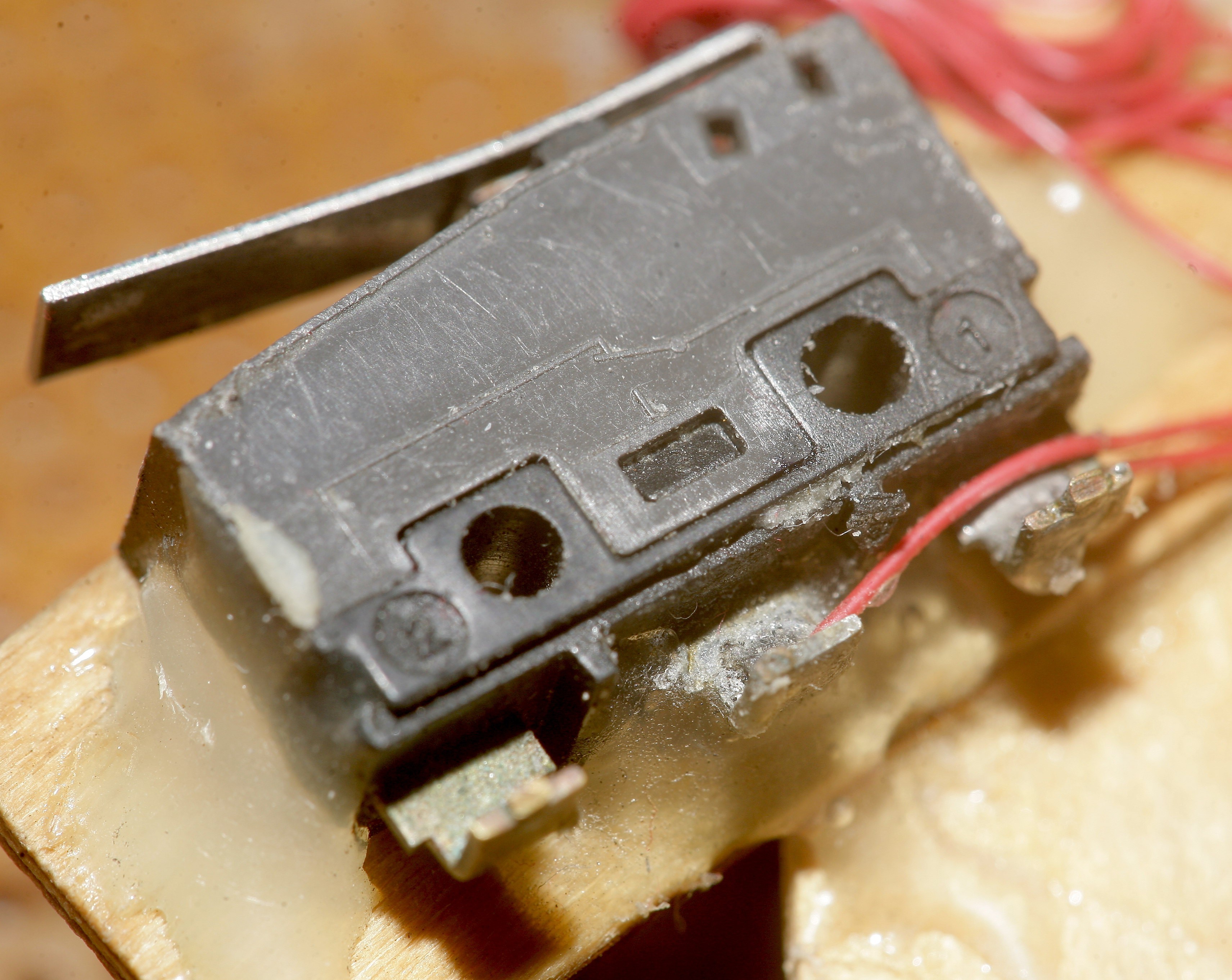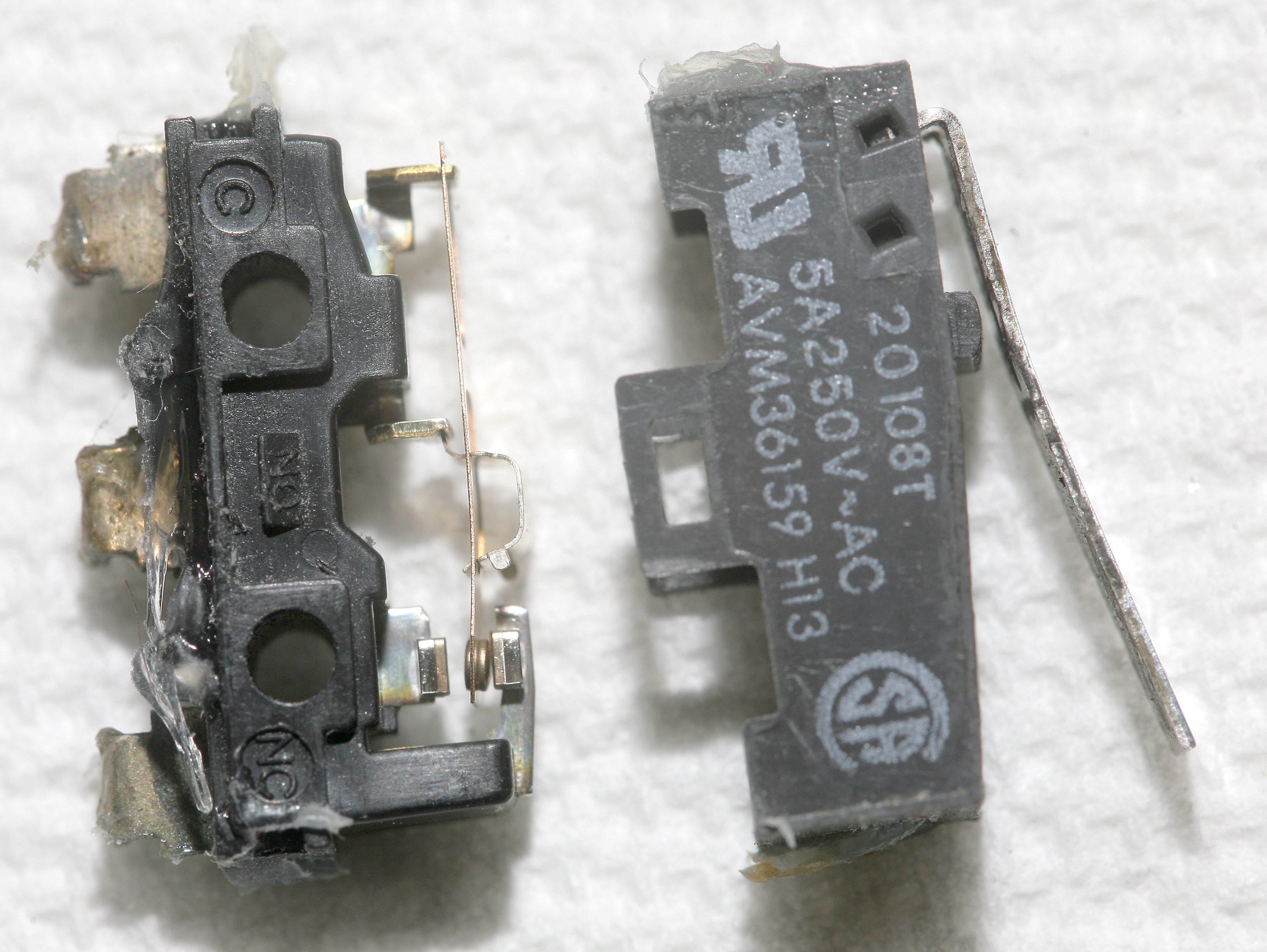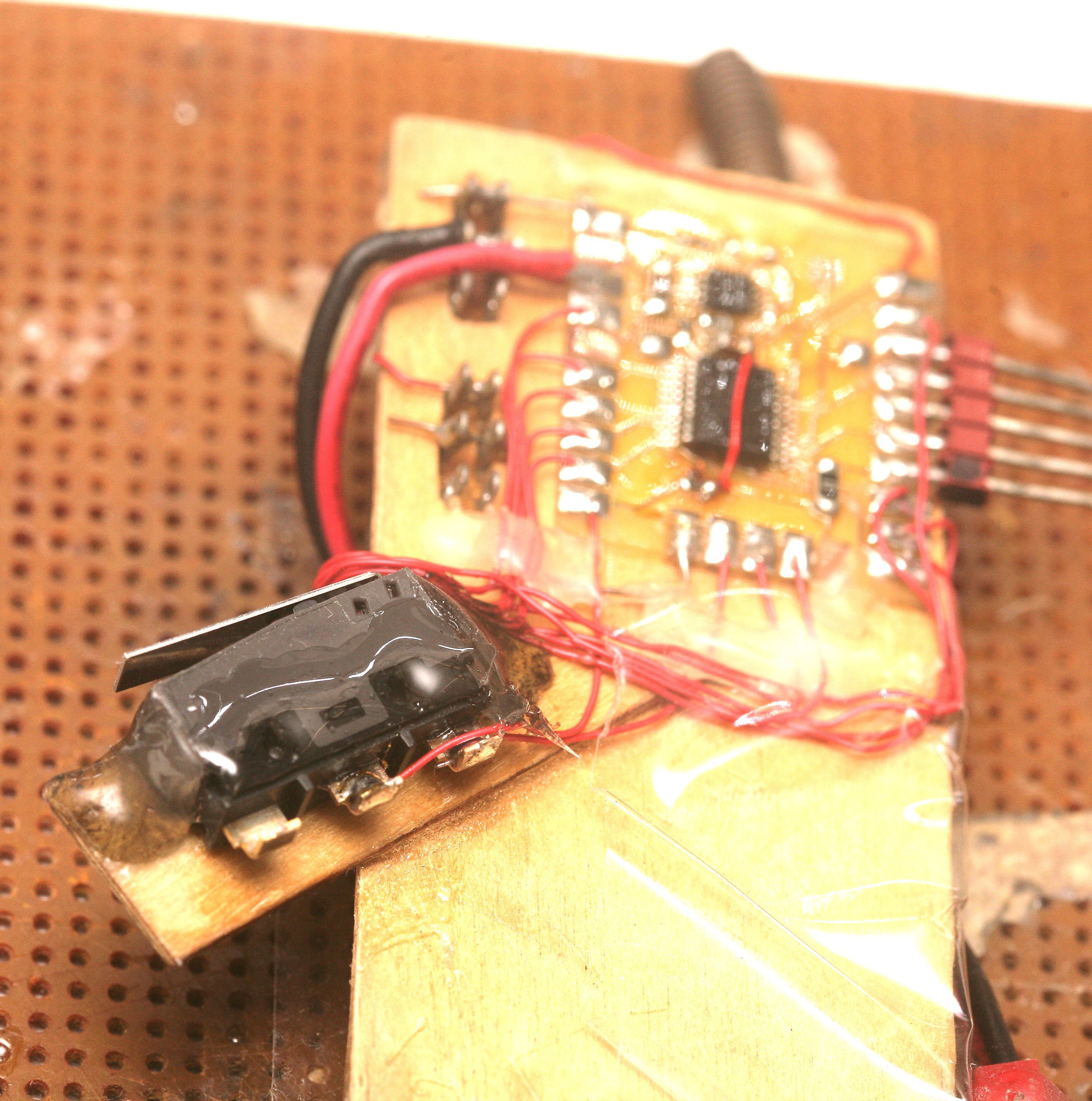The same throttle switch had been used for many thousands of miles, since it was built in 2015. It gradually started failing on, when the lion got real sweaty. It finally failed hard & drove into an intersection on its own. When that happens, you can either kill the transmitter & wait 1 second for the watchdog timer to stop the motor, flip it into reverse, or steer it into a curb. The fastest move is to steer it into a curb. For the 2nd time in uncontrolled drives into roads, there happened to be no traffic. It's a good example of the kind of durability required in an electric scooter.
After failing for a few more miles & stopping by running into curbs, it started failing off & wouldn't go. The lion kingdom long believed the problem was salt water getting into the switch, but didn't know of a foolproof solution or why it started failing off. There was also the chance of salt water shorting pins.

The outside was covered in salt & hot glue from a re gluing 2 years ago. It actually resumed service in 2016. Its previous life was a boundary sensor on the DVD robot from 2002-2009.

The teardown revealed a clean spring with good tension, despite its mileage. It makes sense since the switch is rarely toggled. A 10 mile run with no traffic can be done in only a single button press. The steering buttons take the most beatings.

The problem was the wear on the conductor. This clearly would have trouble conducting when it was dry. It was more like arcing wear it could have experienced in a former life. To fail on, a water drop must have formed in the tiny gap. The pullup resistor was only 50k. Unfortunately, there was no evidence of salt water anywhere inside the switch. This leads to the failures coming from shorted pins.
Another unlikely option is the spring getting weaker over time, until it would engage the conductor but not disengage it, in hot enough weather. The only force available to move the conductor is the spring tension & not the operator. There were still definite click sounds of the spring disengaging.
The switch was acquired around 2001 & it was already over 20 years old by then. It was now over 40 years old. Lions only used it in low current applications, as a boundary sensor.
Technology connections funnily enough made a video about switches on the day of the failure.
The mane idea is the force on the conductor comes entirely from a spring. No amount of pressing on the switch makes the conductor move more forcefully. They use a spring to make the switch bounce & arc as little as possible.

A layer of E6000 was added to the new switch, to try to seal it from water. The circuit board got another layer of polyurethane.
 lion mclionhead
lion mclionhead
Discussions
Become a Hackaday.io Member
Create an account to leave a comment. Already have an account? Log In.